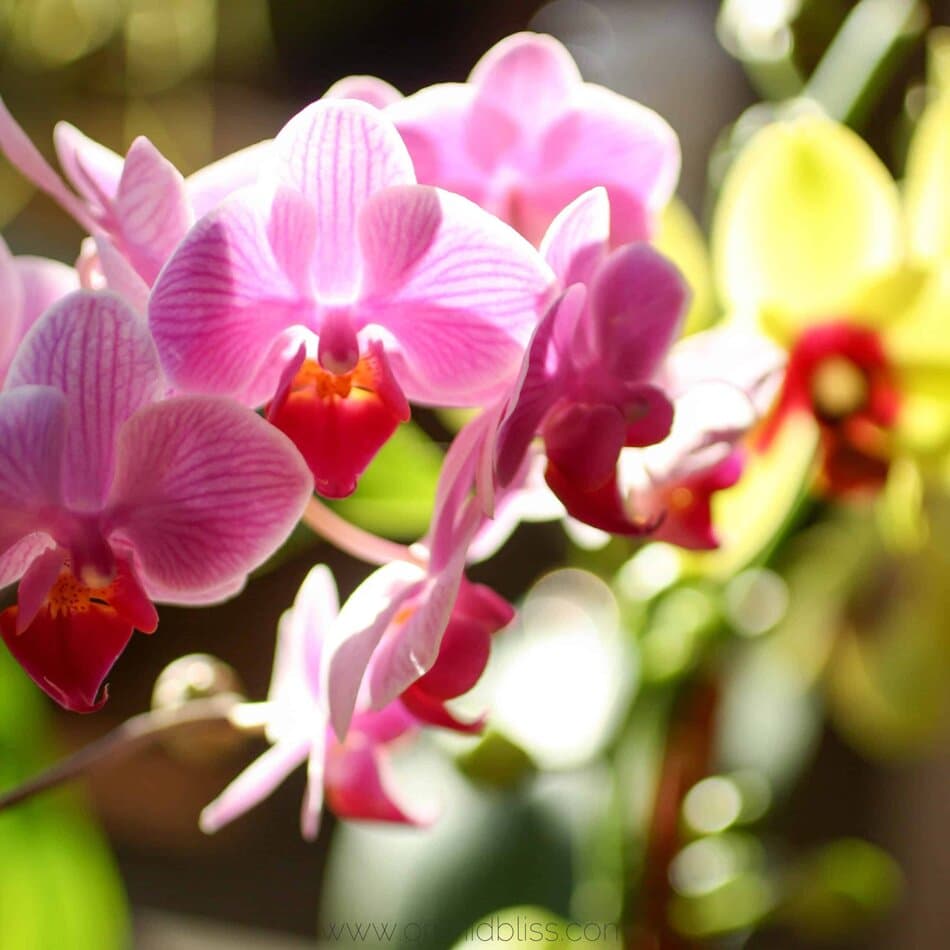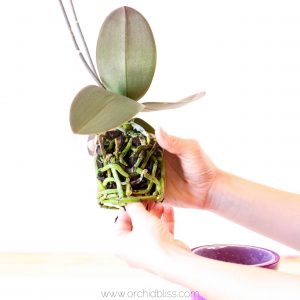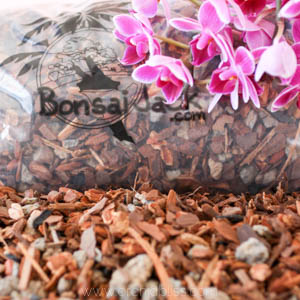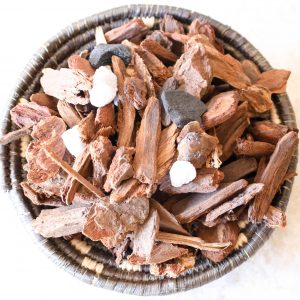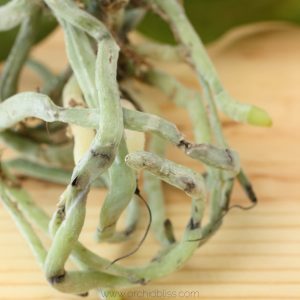
Understanding an orchid’s unique roots is central to nurturing these singular plants. You’ve noticed that while some of your orchid roots burrow down into the potting media, while other roots seem to take on a life of their own without any inclination of growing down into the pot with the other roots. This is completely normal. In fact, these roots have a name: aerial roots.
All About Orchid Roots
The first time I potted an orchid I was amazed at just how different that experience was from planting my annual spring flower pots. From their showy flowers to their peculiar roots, orchids are completely extraordinary. After handling their roots, which are so unlike the root balls I was accustomed to, I had to find out about these curious creations.
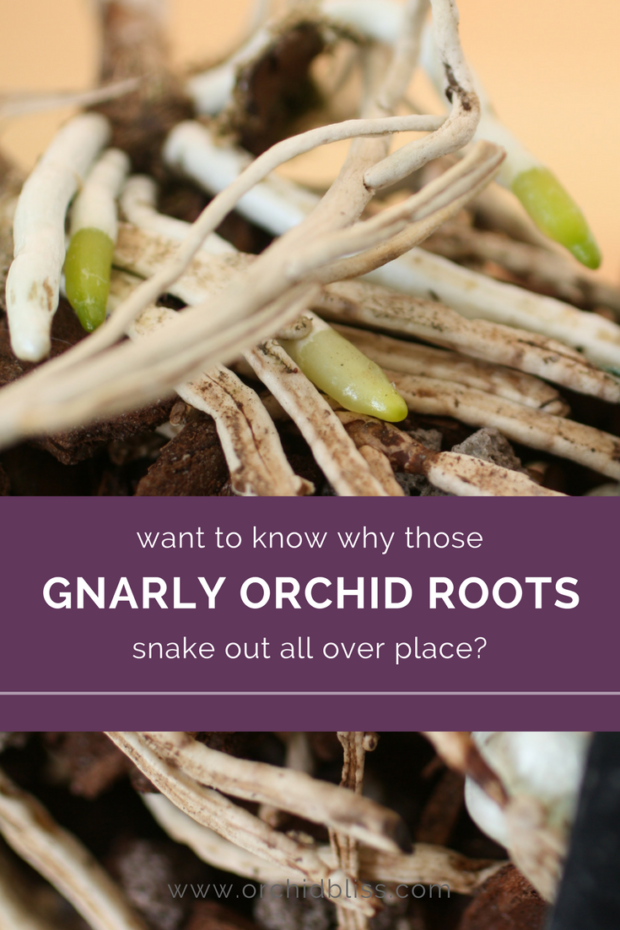
Some of the links on this page may be affiliate links. Click here to learn more.
Q: What makes orchid roots so special? A: Velamen
Orchid roots are sometimes referred to as aerial roots, but that is not a sufficient definition because unlike most other aerial roots, orchid roots are not looking for a place to burrow down into. They truly live in the air. Most orchids will have aerial roots reaching out into the air, rather than digging down into the potting media. These roots are looking for a tree branch to attach to. These roots absorb moisture from the air. Do not trim off these wandering roots, just let them do their thing.
Orchid roots have a covering called velamen which acts like a sponge, soaking up water. The velamen also protects the roots. Special cells in the velamen transport the water to the stele, which is like a blood vein for orchids, which then delivers nutrients to the pseudobulb and leaves.
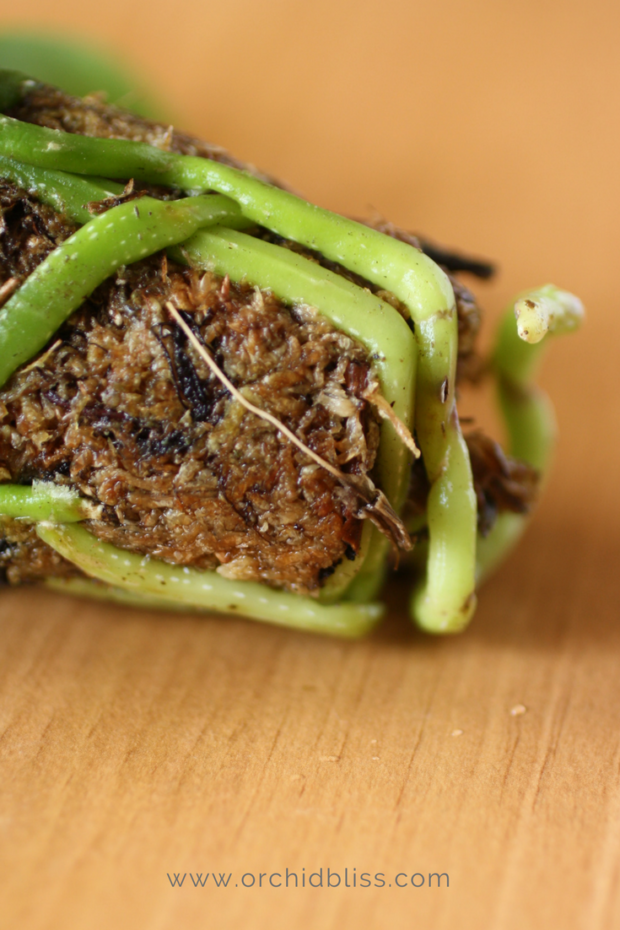
If your orchid roots are bright green – they are still wet. Wait until the roots are a silvery-green before watering again.
Healthy Orchid Roots
Healthy roots are firm to the touch and white to green in color. Orchid roots do not need to be bright green all of the time. In fact, they should only be bright green right after they are watered. If the roots are always bright green that is an indication that they are drowning. Such orchids will eventually die from overwatering.
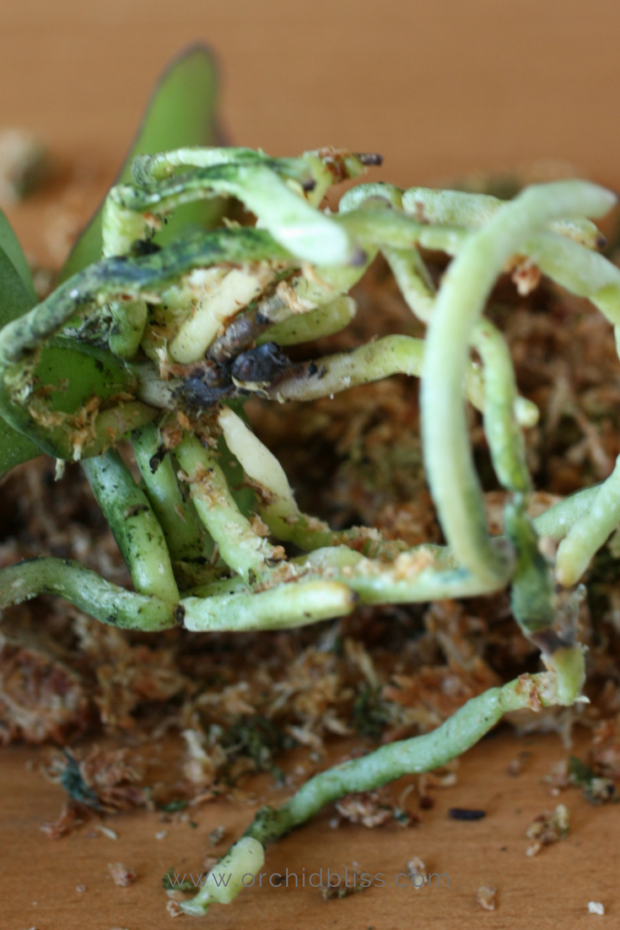
Unhealthy Orchid Roots
If you end up with a dead orchid, before throwing it out, take time to check out the roots. This will give clues about its cause of death and help you to avoid future problems. Rotted roots are easily identified because they are brown, mushy, and hollow. These roots are probably the result of overwatering. Brittle roots indicated under-watering.
If the plant is still alive, but the roots have all died and turned to mush, the plant may still be saved. Remove all the dead roots and use chenille stems, aka pipe cleaners, to anchor the plant in the pot while it makes new roots. It’s worth a try. I’ve talked to an orchid grower who said she’s tried it twice successfully and once unsuccessfully.
When the potting mix begins to break down, you may notice your orchid leaves going limp, and the leaves starting to rot. To keep your orchids looking their best, the first step is to prevent limp, leathery leaves and rotten roots. Download my free cheat sheet on how to prevent limp leaves and rotten roots. Click here for the super helpful cheat sheet.
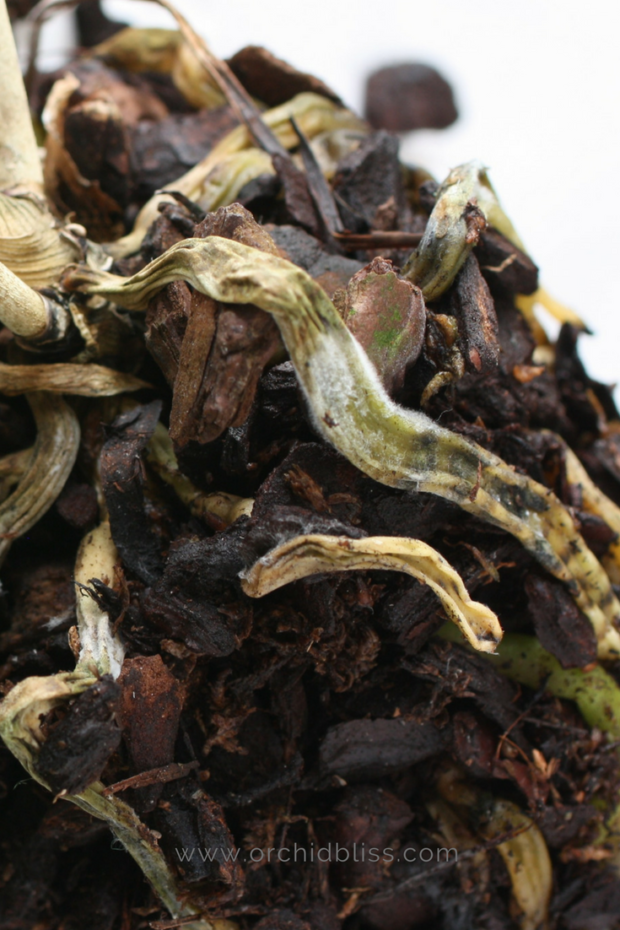
Orchids live harmlessly on trees, never penetrating the branches. Their aerial roots are made to absorb water from rain. Since the roots do not sit in water, it’s easy to see why overwatering orchids are so harmful to their root systems. To learn more about how to properly water your orchids click here.
New Roots = Best Time to Re-Pot Your Orchid
Emerging roots signal that now is the best time to re-pot your orchid. These new roots mean that the orchid is at the beginning of active growth and will help a newly potted orchid the best chance at establishing itself in a new pot. When potting, use care as these new roots are fragile.
About Your Orchids Aerial Roots
On some orchids, it can be tricky to tell the difference between a flower spike and an aerial root. This is how to tell the difference: an aerial root will have a smooth tip. The end of an emerging flower spike will look like a closed fist with knuckle bumps.
To help you further, start by downloading my free cheat sheet to see where to cut the orchid flower spike after the blooms have faded to trigger re-blooming. Click here, for the cheat sheet. It’ll be super helpful.
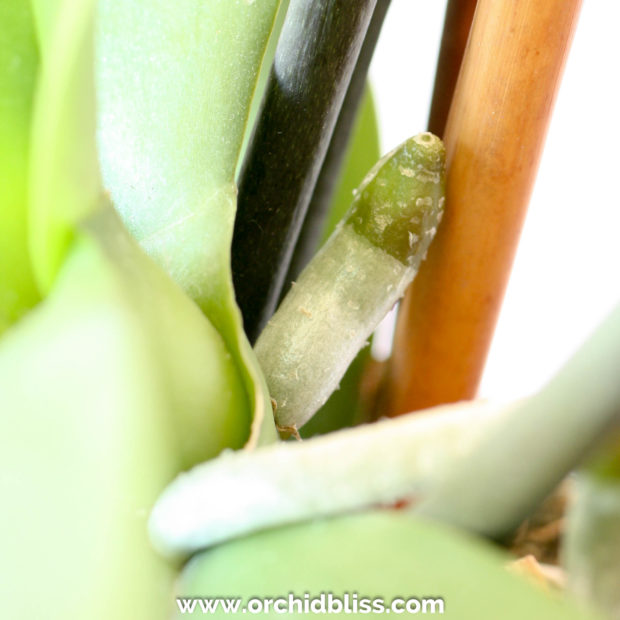
The smooth tip is a sure sign that this is a root, not a flower stalk.
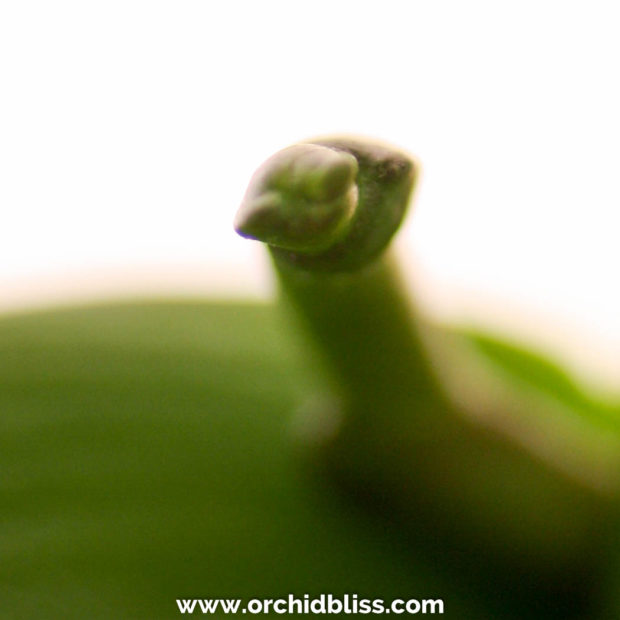
Pictured above is a flower stalk. If you see a “fist” at the tip, you know you’ve got a flower stalk.
Is it Okay to Cut off Aerial Roots?
It may be tempting to cut off aerial roots because they don’t fit into our idea of what a beautiful orchid should look like. Resist. Aerial roots perform important functions for the orchid. Like the leaves and stems, aerial roots aid in photosynthesis. Aerial roots also absorb water and nutrients in the air. Additionally, aerial roots aid the orchid in affixing itself to its host.
Watering and Aerial Roots
Sometimes aerial roots can look dried out and it can be tempting to water the orchid. To avoid rotting the roots down in the potting media, don’t let the aerial roots tell you when to water your orchid. Instead, look at, or even touch, the potting media. If it is still damp, wait to water.
If the aerial roots are looking dried out, you have several options. First, you can mist the roots with a spray bottle. Just be careful not to raise humidity levels above 50% in a home environment. Second, you could increase the humidity around your orchid. Third, just let them be.
Personally, I’m more inclined to go with the second and third options. The first one is too time-consuming and I find that if I’m too fussy with my orchids, I tend to cause more harm than good. I keep a cool-mist humidifier on the lowest setting. And, I just let those aerial do what they are going to do.
Potting Aerial Roots
When potting an orchid, leave aerial roots in the air and potted roots in the potting medium. Aerial roots have a thicker coating of velamin and are physiologically different than roots that are growing in the potting medium.
Enjoy the Journey
No matter if you’re resisting the urge to cut off every last aerial root, or if you find them intriguing enjoy your orchid-growing journey!

